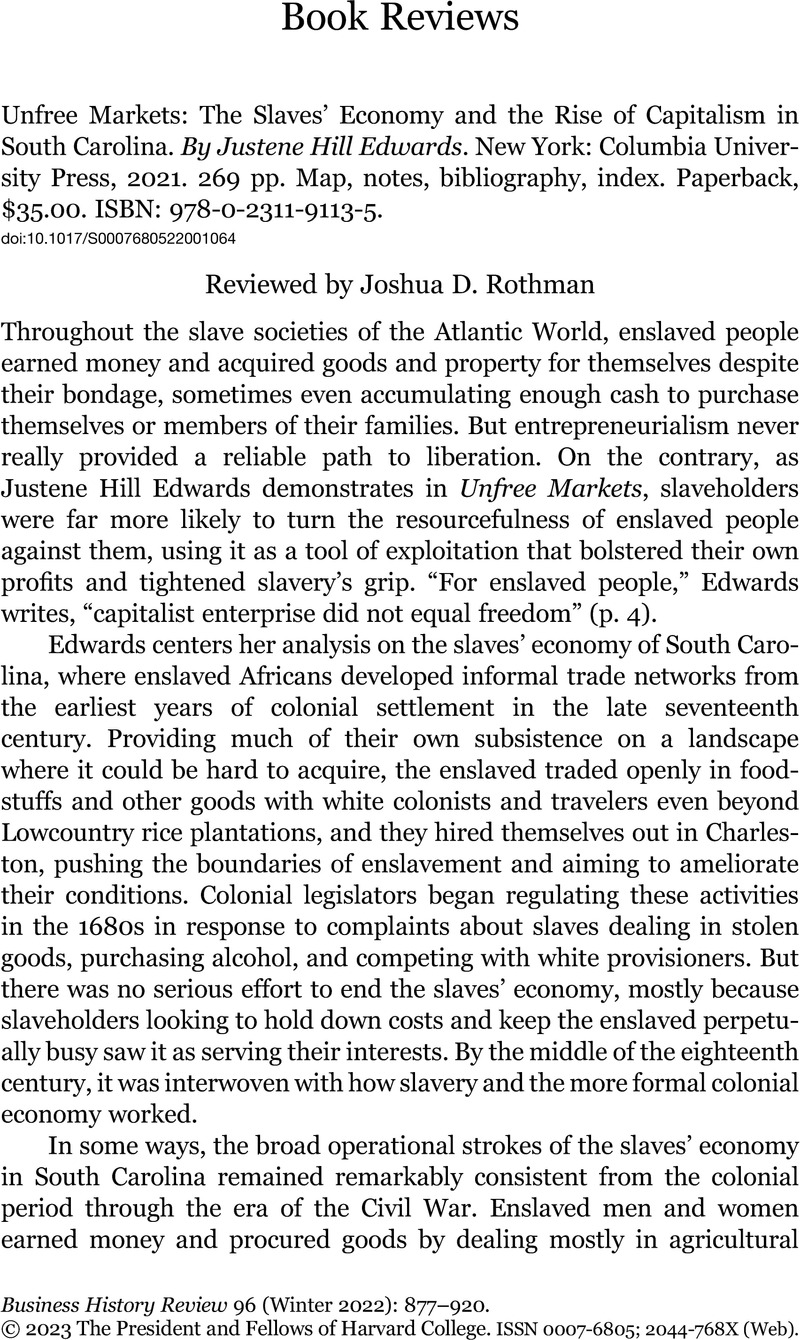No CrossRef data available.
Article contents
Unfree Markets: The Slaves’ Economy and the Rise of Capitalism in South Carolina. By Justene Hill Edwards. New York: Columbia University Press, 2021. 269 pp. Map, notes, bibliography, index. Paperback, $35.00. ISBN: 978-0-2311-9113-5.
Review products
Unfree Markets: The Slaves’ Economy and the Rise of Capitalism in South Carolina. By Justene Hill Edwards. New York: Columbia University Press, 2021. 269 pp. Map, notes, bibliography, index. Paperback, $35.00. ISBN: 978-0-2311-9113-5.
Published online by Cambridge University Press: 08 February 2023
Abstract
An abstract is not available for this content so a preview has been provided. Please use the Get access link above for information on how to access this content.

- Type
- Book Review
- Information
- Copyright
- Copyright © 2023 The President and Fellows of Harvard College


